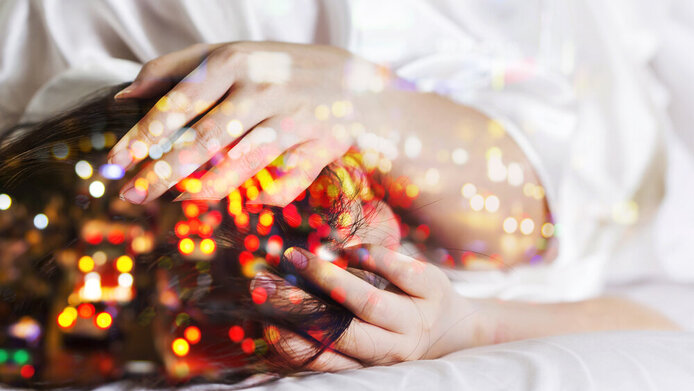Migraine: Light therapy may bring new hope

Migraine is a common ailment which debilitates sufferers and can be chronic. About ten percent of adults have recurring migraines, women more often than men, but sufferers also include children and young people. In its Global Burden of Disease Study, the WHO lists migraine as disabler number six in a list of more than 300 afflictions worldwide. Migraines are often accompanied by heightened sensitivity to smells, noise or light, with light sensitivity representing a particular burden for patients. Light stimuli can also be what triggers headaches. In both cases, those affected are severely diminished in their daily life. Sufferers who cannot bear even normal levels of daylight have to withdraw to darkened rooms during an attack, but are also inclined to avoid light between attacks. Until now, such a deliberate strategy of avoidance has been among the recommendations doctors give to migraine patients.
Improvement instead of avoidance
“With the passage of time we have come to suspect that avoiding light may be detrimental, because it can heighten sensitivity to light – so-called photophobia – even more”, explains migraine specialist Christian Wöber. This can be compared to people who are afraid of heights or of confined spaces. Avoiding such fear-provoking situations will not solve the problem. In a recently initiated study funded by the Austrian Science Fund FWF, a team of researchers from the Medical University Vienna is exploring whether there are other, more sustainable ways of dealing with light sensitivity during migraine attacks. First investigations have shown that the opposite approach, namely desensitising the brain to light stimuli, might be a better strategy than avoiding light. In one-week training sessions patients are exposed to “flickering light” in order to accustom the brain to bright or normal light.
New approaches – contrasting concepts
“The ongoing research project will use functional magnetic resonance imaging (fMRI) to obtain the initial functional brain data that will help to devise the best possible strategy”, says the fMRI expert Roland Beisteiner who submitted the project to the FWF. Migraine patients and non-sufferers will be treated with both measures – light exposure and light withdrawal. For the first time, the reactions of their brain will be measured to discern the effects of these two opposite strategies. The project is being conducted by a fMRI research group headed by Roland Beisteiner and a research group on headaches under the leadership of Christian Wöber and Stefan Seidel. The Australian psychologist Paul Martin is assisting the Vienna team. “As yet, we don’t know for certain whether desensitisation, i.e. treatment using light, actually improves the brain’s tolerance of light. If it does, it would open up a completely new therapeutic avenue”, the researchers emphasise. As every patient undergoes both therapies at an interval of three months, the team can compare the effects on individual patients and observe the difference in brain activity between sufferers and healthy control groups.
Progress in migraine research
In recent years, researchers have come to understand many aspects of migraine attacks. Migraine is a genetic disorder and involves functional modifications of the nervous system. Signals from the cortex, the brainstem and the facial nerves trigger an inflammation response in the cerebral membrane leading to typical migraine symptoms. Messenger substances that play an important role in migraines have been identified and have permitted researchers to develop drugs that are specifically effective against migraines. Why an attack is triggered at a certain point or what triggers it are questions that still need further investigation. In the current FWF project, the researchers from the Medical University Vienna focus on a fact well known from numerous studies – namely that migraine is linked to a defect in the brain’s processing of stimuli. Migraine sufferers often react differently to sensory stimuli such as light, noise and smells compared to non-sufferers. They have a sharper perception of these stimuli and are unable to ward them off. The FWF project seeks to answer the question as to whether avoiding light stimuli, the traditionally recommended route, or targeted exposure to light is the better strategy.
The principal investigators The neurologists Roland Beisteiner and Christian Wöber work at the Department of Neurology at Medical University of Vienna. Beisteiner is an expert in functional magnetic resonance imaging (fMRI), www.oegfmrt.org. Christian Wöber heads the day clinic for headache patients, which is part of the university hospital. The FWF project “Migraine-linked Photophobia” ends in 2017.
Participation in the study The ongoing study “Migraine-linked Photophobia” is still looking for patients (age 18 to 40). Send applications to:





